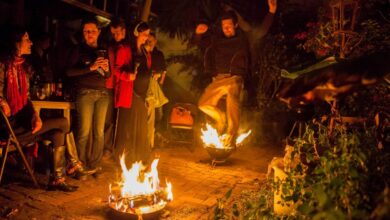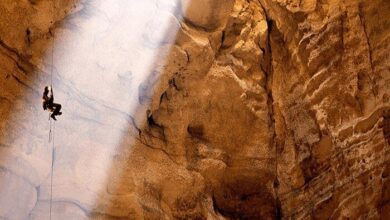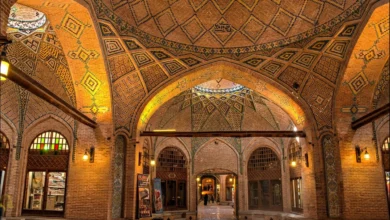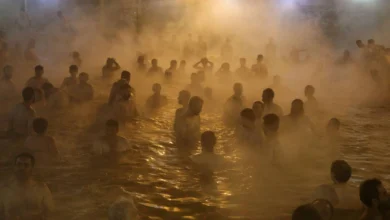Persian Musical Instruments: A Journey Through Iran’s Sonic Heritage
Persian Musical Instruments: Iran’s Sonic Legacy
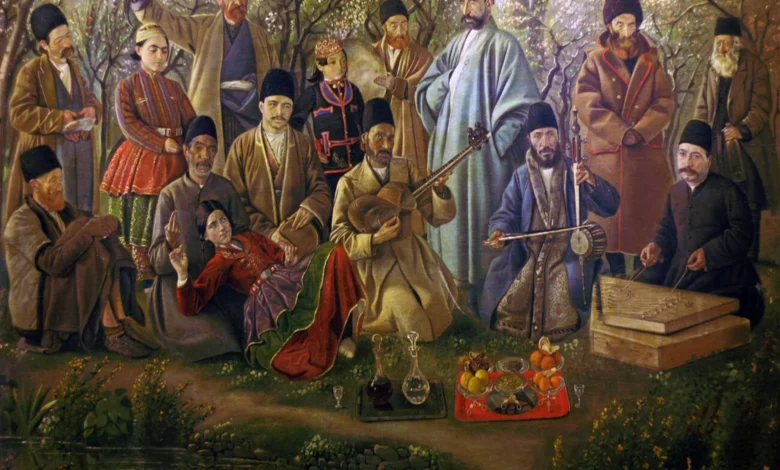
Iran’s musical tradition, steeped in centuries of cultural richness, resonates through its Persian musical instruments. These instruments, crafted with precision and imbued with history, create the soulful melodies that define Persian music.
From the intricate strings of the tar to the haunting tones of the ney, each instrument tells a story of artistry and heritage. For first-time travelers to Iran, exploring these instruments offers a vibrant connection to the country’s cultural heartbeat.
Why do these sounds captivate listeners worldwide? Their unique timbres and historical significance make them timeless. This article dives into the most iconic Persian instruments, their roles in music, and how travelers can experience them.

Contents
Tar: The Heart of Persian Strings
What instrument embodies the essence of Persian classical music? The tar, a long-necked, double-bellied lute, holds that honor. Originating in the 18th century during the Qajar dynasty, the tar features six strings, typically played with a brass plectrum. Its hourglass-shaped body, made from mulberry wood and covered with lambskin, produces a warm, resonant tone.
Musicians pluck the strings to create intricate melodies, often accompanying poetry by Rumi or Hafez. The tar’s versatility shines in both solo and ensemble performances, making it a staple in Iranian music concerts. Travelers can hear its soulful notes at Tehran’s Vahdat Hall, a hub for cultural performances.
Craftsmanship and Cultural Role
Crafting a tar requires months of meticulous work. Luthiers carve the body, stretch the skin, and tune the strings to perfection. The instrument’s name, meaning “string” in Persian, reflects its core design. In Persian culture, the tar symbolizes emotional expression, often played during Nowruz celebrations or intimate gatherings. Visitors to Isfahan’s music shops can watch artisans at work, gaining insight into this revered craft.
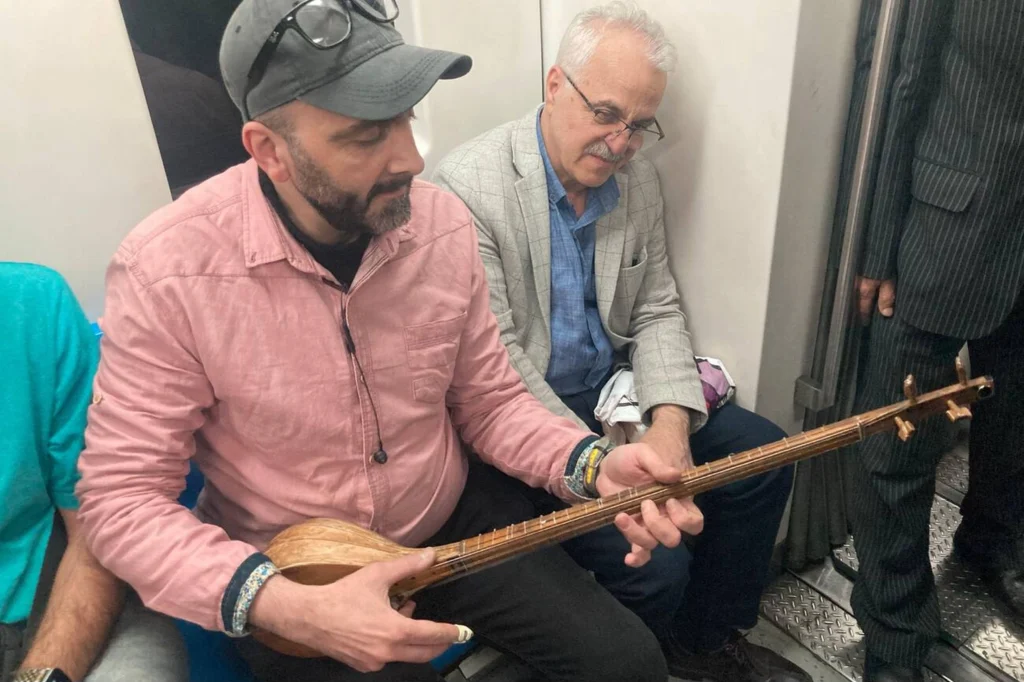
Setar: The Soulful Storyteller
Ever wonder which instrument captures the introspective side of Persian music? The setar, a smaller, four-stringed lute, excels in this role. Its name, meaning “three strings” (despite having four), hints at its historical evolution.
With a pear-shaped body and a delicate sound, the setar is ideal for solo performances, evoking deep emotions. Musicians use their fingertips to pluck the strings, creating soft, melodic phrases that complement mystical poetry. The setar’s origins trace back to the Safavid era (16th–18th centuries), and it remains a favorite among Sufi musicians.
A Window into Mysticism
The setar’s gentle tones resonate in Sufi music, where it accompanies spiritual chants. Its simplicity allows players to improvise, making each performance unique. Travelers can experience the setar at Shiraz’s Hafezieh, where musicians often play near Hafez’s tomb. The instrument’s intimate sound invites listeners to reflect, offering a profound cultural experience.
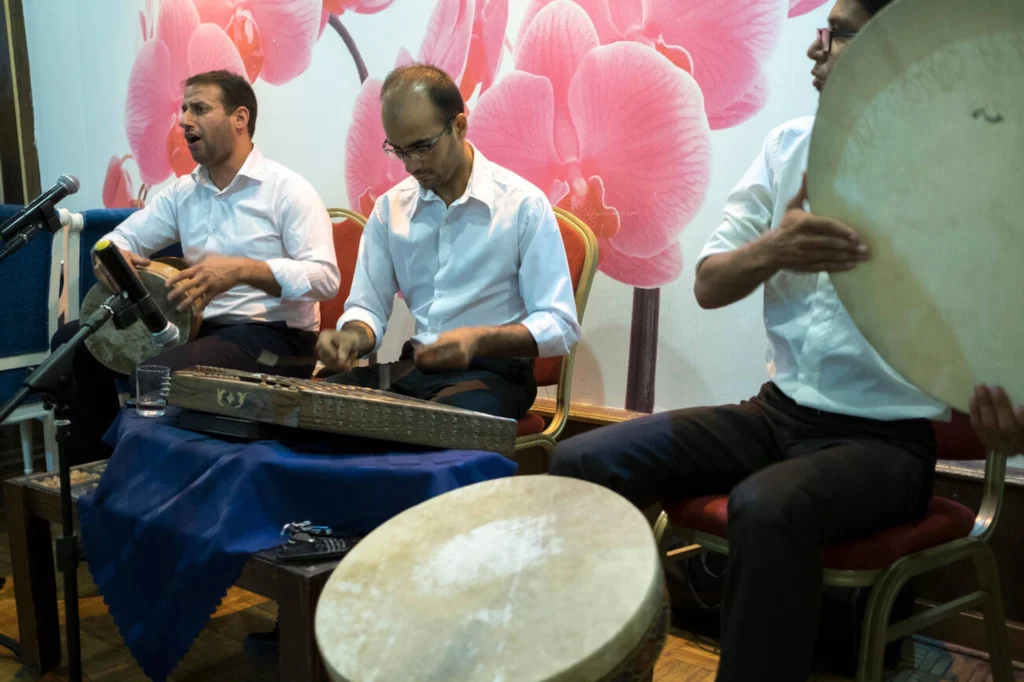
Santur: The Melodic Hammered Dulcimer
How does a single instrument create a cascade of notes? The santur, a trapezoidal hammered dulcimer, achieves this feat. With 72 strings stretched over a wooden frame, the santur is struck with lightweight mallets called mezrab.
Its origins date to ancient Persia, with references in 12th-century texts. The instrument’s bright, shimmering sound features in Persian classical ensembles, often leading the melody. Musicians tune the strings in sets of four, allowing for complex scales and rapid passages. The santur’s versatility extends to folk and contemporary music, captivating audiences worldwide.
Global Influence and Craft
The santur’s design influenced instruments like the Chinese yangqin and the European cimbalom. Crafting a santur involves selecting walnut or rosewood for the body and precise string alignment. In Iranian culture, the santur symbolizes harmony, often played at weddings and festivals. Visitors to Mashhad’s cultural centers can attend santur recitals, immersing themselves in its vibrant tones.
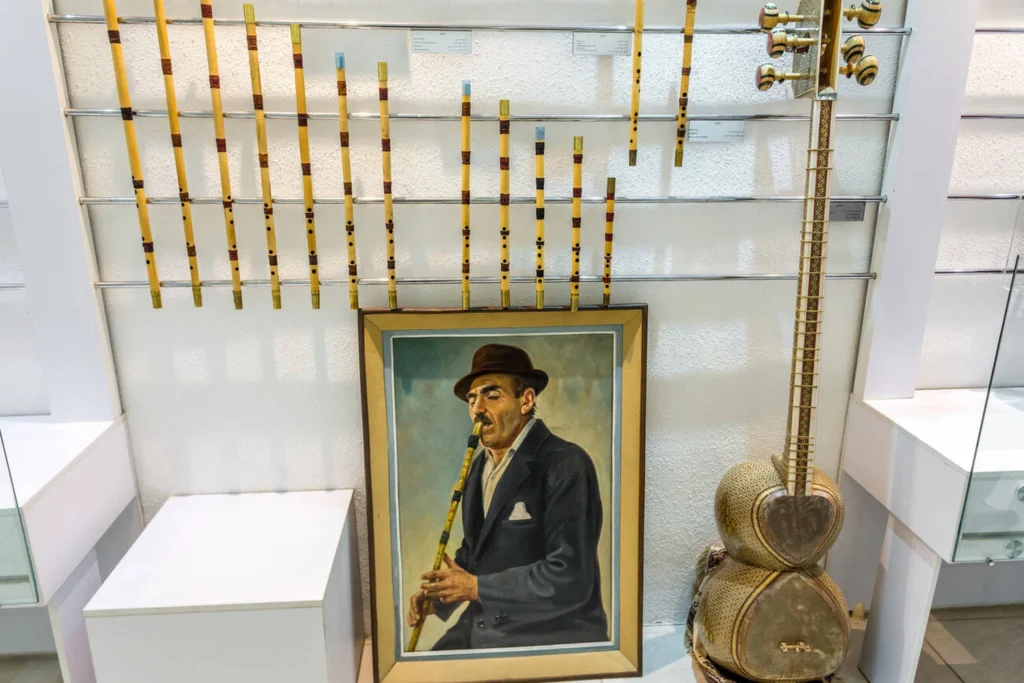
Ney: The Breath of Persian Soul
What instrument mimics the human voice with haunting beauty? The ney, a simple reed flute, holds this distinction. Made from a single piece of bamboo or reed, the ney has seven holes (six finger holes and one for the thumb).
Players blow air across an opening, producing a breathy, melancholic sound. Dating back to ancient Persia, the ney is central to Sufi music and classical traditions. Its ethereal tones evoke spiritual longing, often accompanying Rumi’s poetry. The ney’s simplicity belies its expressive power, making it a favorite among mystic musicians.
Spiritual Significance
In Sufi tradition, the ney symbolizes the soul’s yearning for the divine. Its sound, described as a lament, resonates in ceremonies at Konya’s Mevlana Museum, though travelers can hear it in Iran’s teahouses. Crafting a ney requires selecting the right reed and carving precise holes, a skill passed down through generations. Visitors to Yazd’s traditional music venues can witness ney performances, connecting with Iran’s spiritual heritage.
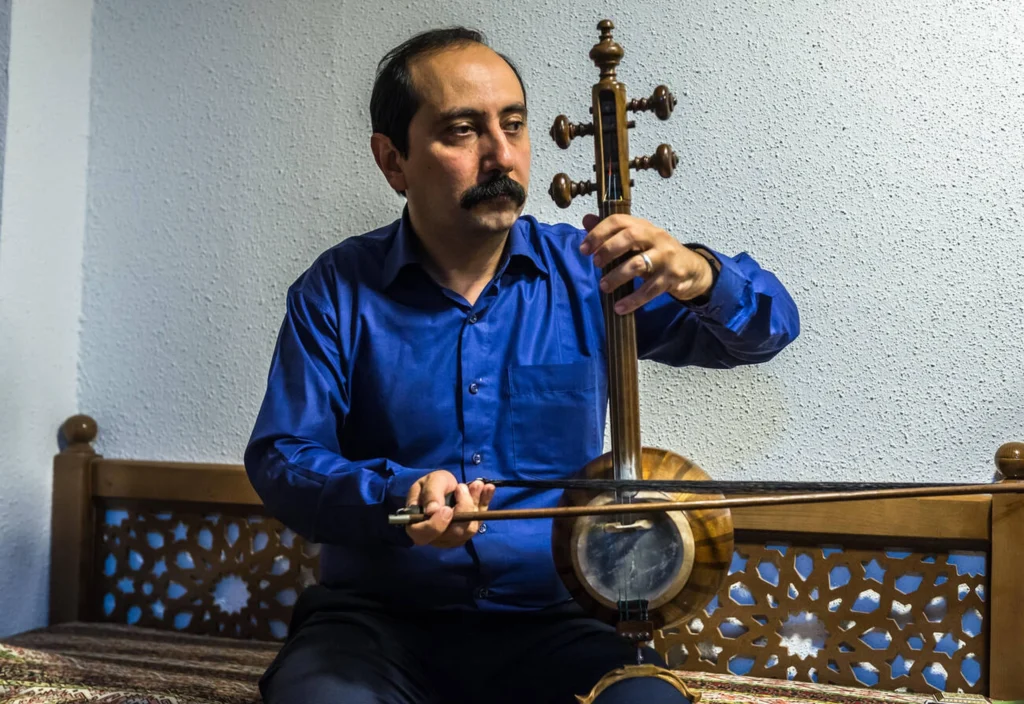
Kamancheh: The Voice of Emotion
Can an instrument weep and rejoice simultaneously? The kamancheh, a spiked fiddle, does just that. With a spherical body, four strings, and a horsehair bow, the kamancheh produces a rich, vocal-like sound. Its origins trace to the 10th century, and it remains a cornerstone of Persian classical music.
Musicians play it upright, resting the spike on their knee, allowing for dynamic expression. The kamancheh shines in both solo and ensemble settings, often mimicking human emotions. Its versatility extends to Kurdish and Azerbaijani music, reflecting Iran’s cultural diversity.
Craft and Performance
Crafting a kamancheh involves shaping a walnut body, stretching fish skin over the soundboard, and tuning gut or metal strings. The instrument’s name, meaning “little bow,” reflects its compact design. In Persian culture, the kamancheh is played at joyous and mournful occasions, from weddings to funerals. Travelers to Tabriz’s music festivals can hear its emotive strains, experiencing Iran’s regional sounds.
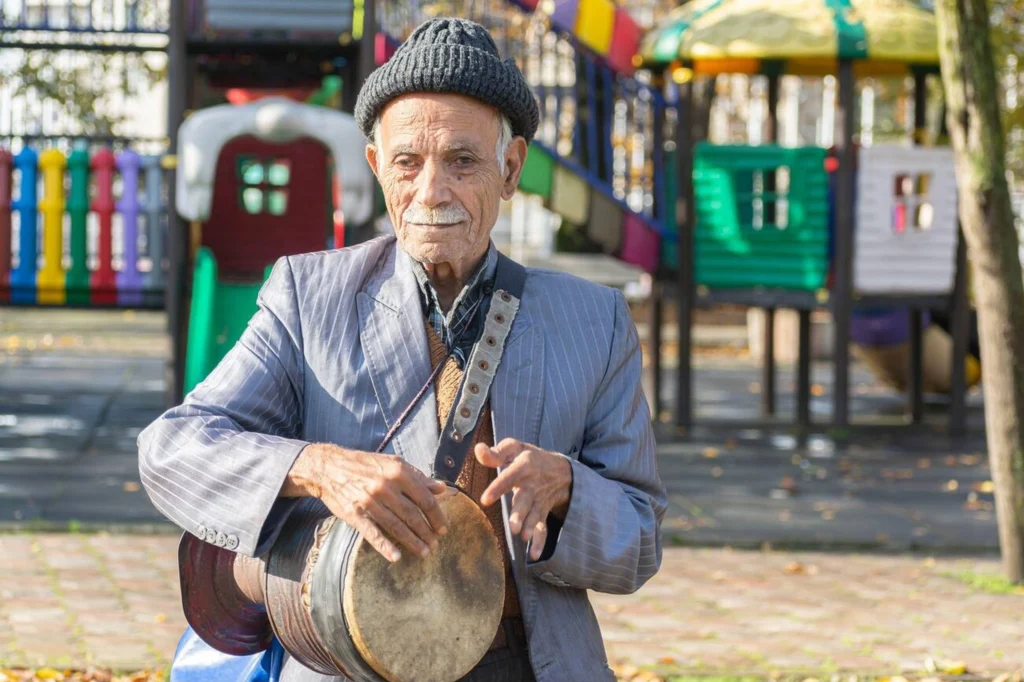
Tombak: The Pulse of Persian Rhythm
What drives the rhythm in Persian music? The tombak, a goblet-shaped drum, provides the heartbeat. Made from walnut or ash wood, the tombak is covered with goatskin and played with fingers and palms. Its origins date to the Sassanid era (3rd–7th centuries), and it dominates Persian classical and folk music. Musicians create intricate rhythms using techniques like snaps and rolls, supporting melodic instruments. The tombak’s versatility allows it to lead or accompany, making it essential in ensembles.
Rhythmic Artistry
The tombak’s complex patterns require years of training. Master drummers perform solo pieces, showcasing the instrument’s range. In Iranian culture, the tombak energizes celebrations like Chaharshanbe Suri. Travelers to Kish Island’s cultural events can witness tombak performances, feeling the pulse of Persian rhythms.
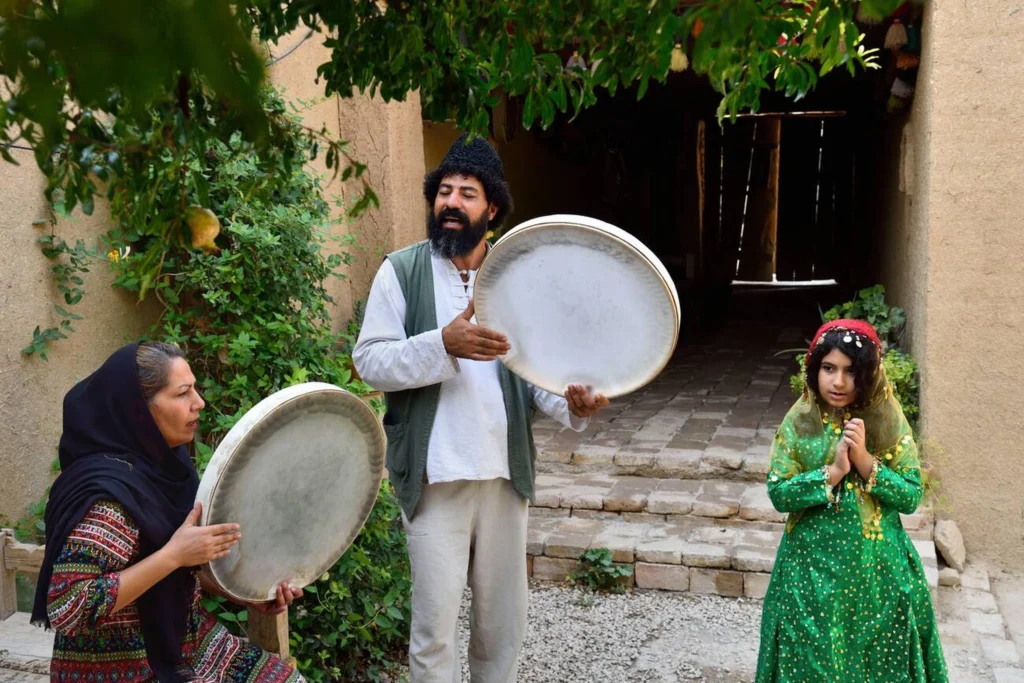
Daf: The Drum of Unity
How does a drum unite communities? The daf, a large frame drum, achieves this through its powerful sound. With a wooden hoop covered in goatskin, the daf often features metal rings inside, adding a jingling effect.
Originating in Kurdish and Sufi traditions, the daf is played with fingers and palms, producing resonant beats. Its use in Sufi rituals, particularly during dhikr ceremonies, fosters spiritual connection. The daf also appears in folk music, energizing dances and gatherings.
Cultural and Spiritual Role
The daf’s rhythmic chants accompany Sufi whirling in Kermanshah’s tekkes. Crafting a daf involves balancing the frame’s weight and skin tension, ensuring a deep tone. Travelers to Qeshm’s cultural festivals can join daf-led celebrations, experiencing its communal spirit.
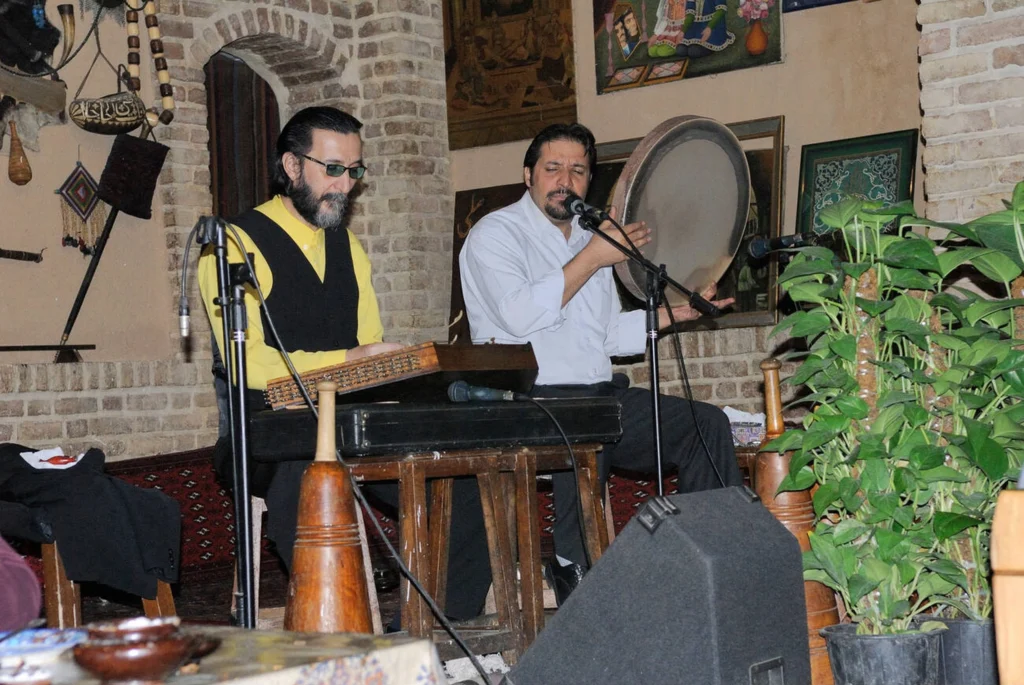
Experiencing Persian Music as a Traveler
Why should travelers explore Persian musical instruments? They offer a gateway to Iran’s cultural soul. Visitors can attend concerts at Tehran’s Niavaran Cultural Center or Shiraz’s Pars Museum, where ensembles showcase these instruments.
Music shops in Isfahan’s bazaars sell tars and setars, allowing travelers to purchase authentic souvenirs. Festivals like the Fajr Music Festival in February feature performances across genres, from classical to folk. Teahouses in Kashan and Yazd offer intimate settings for live music, blending tradition with hospitality.
Practical Tips for Music Lovers
To fully experience Persian music, plan your trip during spring or summer for outdoor festivals. Check event schedules in advance, as performances vary by city. Learning basic Persian phrases enhances interactions with musicians.
For a deeper dive, join music workshops in Tehran or Mashhad, where instructors teach instruments like the santur or tombak. Staying in historic hotels in Isfahan or Shiraz places you near cultural venues, enriching your journey.
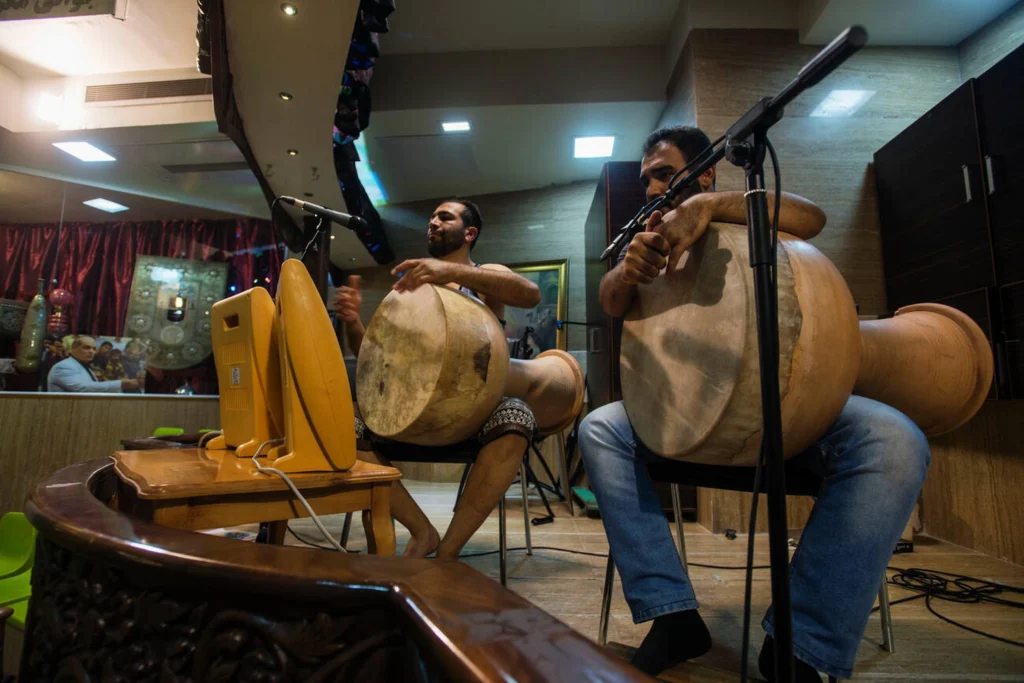
Why Persian Instruments Matter
Persian musical instruments do more than produce sound—they preserve Iran’s history and identity. Each note from the ney or kamancheh carries centuries of poetry, spirituality, and resilience. For travelers, engaging with these instruments through performances or workshops fosters a profound connection to Iran’s people. Whether you’re captivated by the tar’s melodies or the daf’s rhythms, these instruments invite you to celebrate Iran’s sonic legacy.


